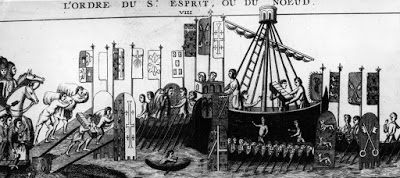

| Online: | |
| Visits: | |
| Stories: |

| Story Views | |
| Now: | |
| Last Hour: | |
| Last 24 Hours: | |
| Total: | |
TradCatKnight: Archaeologists discover a treasure-laden shipwreck from the Crusades
Thursday, March 16, 2017 16:26
% of readers think this story is Fact. Add your two cents.
Archaeologists discover a treasure-laden shipwreck from the Crusades
Archaeologists discover a treasure-laden shipwreck from the Crusades
Video included: Top 5 Myths About the Crusades
The year 1291 A.D. was a dark year for Christian Crusaders in the Holy Land. When the Crusader capital of Jerusalem was lost to Saladin in 1187, the Haifa Bay port of Acre became the new landing site for European soldiers, knights, and horses as well as an international trading hub for the export of sugar, spices, glass, and textiles back to Europe. But by the spring of 1291, an Egyptian sultan, Al-Ashraf Khalil, had moved in with 100,000 cavalry and foot soldiers to banish the Crusaders from the Holy Land once and for all.
Marine archeologists have now discovered the remains of a treasure-laden Crusader ship that they have reason to believe was one of many vessels that tried to flee Acre when the sultan stormed the city, Haaretz reports. The wood on the ship dates back to between 1062 and 1250 A.D. but among the keel and planks that remain the archaeologists also discovered 30 gold coins.
These coins are the key to linking the wreck to the fleeing Crusaders. Robert Kool of Israel Antiquities Authority identified the coins as “florins,” which were minted in Florence beginning in 1252. Historical eyewitnesses from the Siege of Acre recorded that nobles and merchants would use such valuables to bribe boats owners in the hope of buying their escape. Among the wreckage, archaeologists also found ceramic bowls and jugs from places like southern Italy, Syria, and Cyprus.
In the end, Acre fell to the sultan after 100 years of Frankish rule, with the final defenders, a group of Knights Templar, ultimately crushed beneath the fortress after refusing to abandon it. At the siege’s end, the Catholic Church abandoned the Jerusalem Crusades. Jeva Lange
These coins are the key to linking the wreck to the fleeing Crusaders. Robert Kool of Israel Antiquities Authority identified the coins as “florins,” which were minted in Florence beginning in 1252. Historical eyewitnesses from the Siege of Acre recorded that nobles and merchants would use such valuables to bribe boats owners in the hope of buying their escape. Among the wreckage, archaeologists also found ceramic bowls and jugs from places like southern Italy, Syria, and Cyprus.
In the end, Acre fell to the sultan after 100 years of Frankish rule, with the final defenders, a group of Knights Templar, ultimately crushed beneath the fortress after refusing to abandon it. At the siege’s end, the Catholic Church abandoned the Jerusalem Crusades. Jeva Lange
If you enjoy the TradCatKnight blogs, please recommend above as a contributor!
watch related video at article link above.

The contributor has disabled comments for this story


